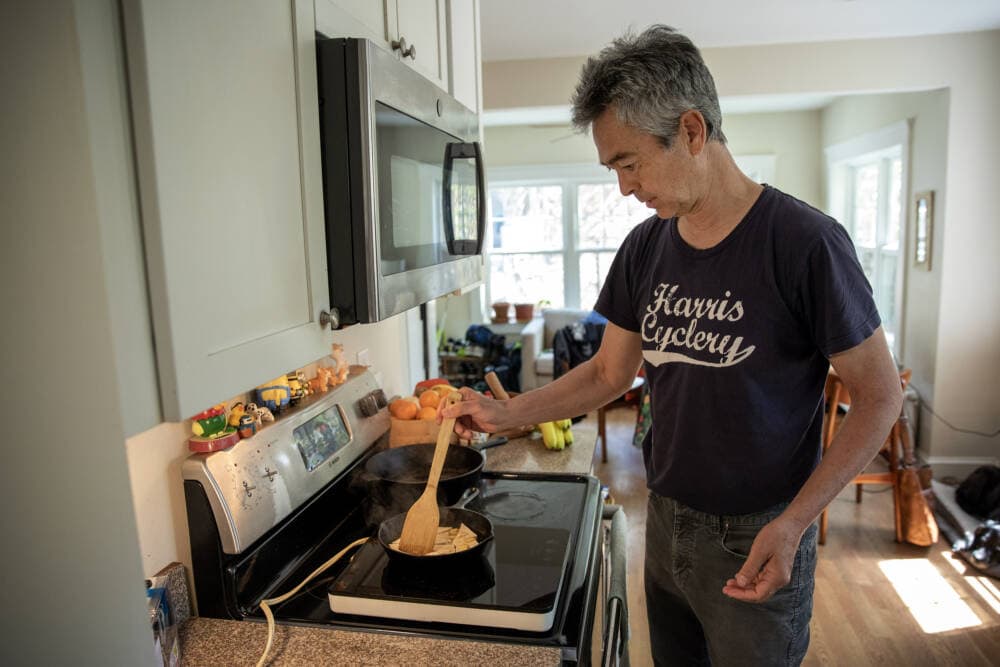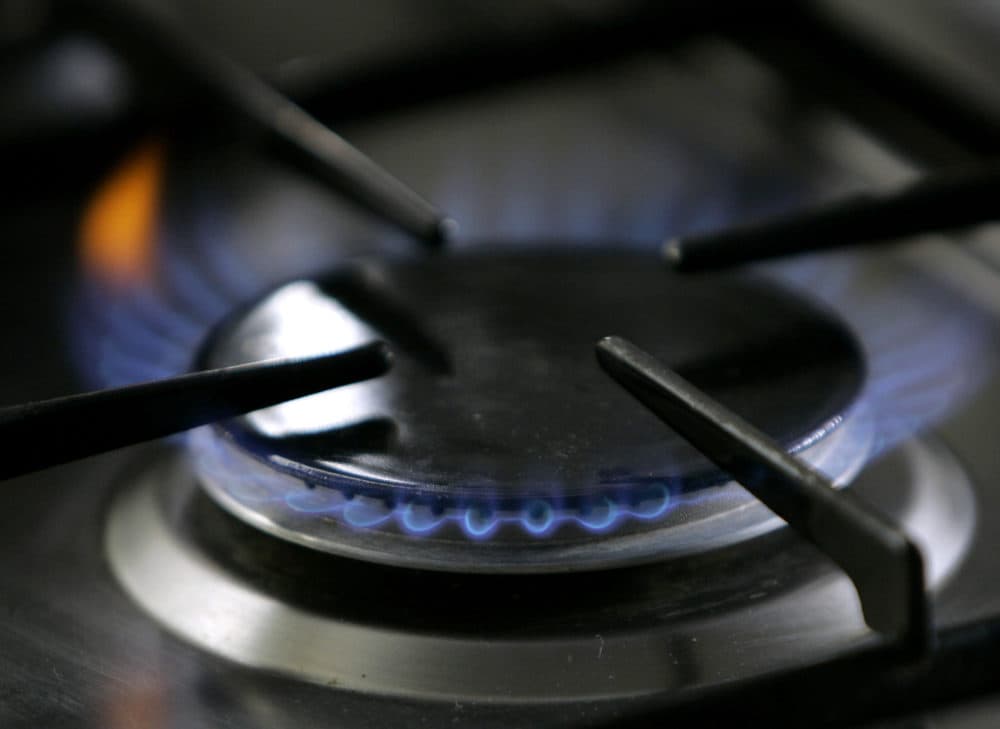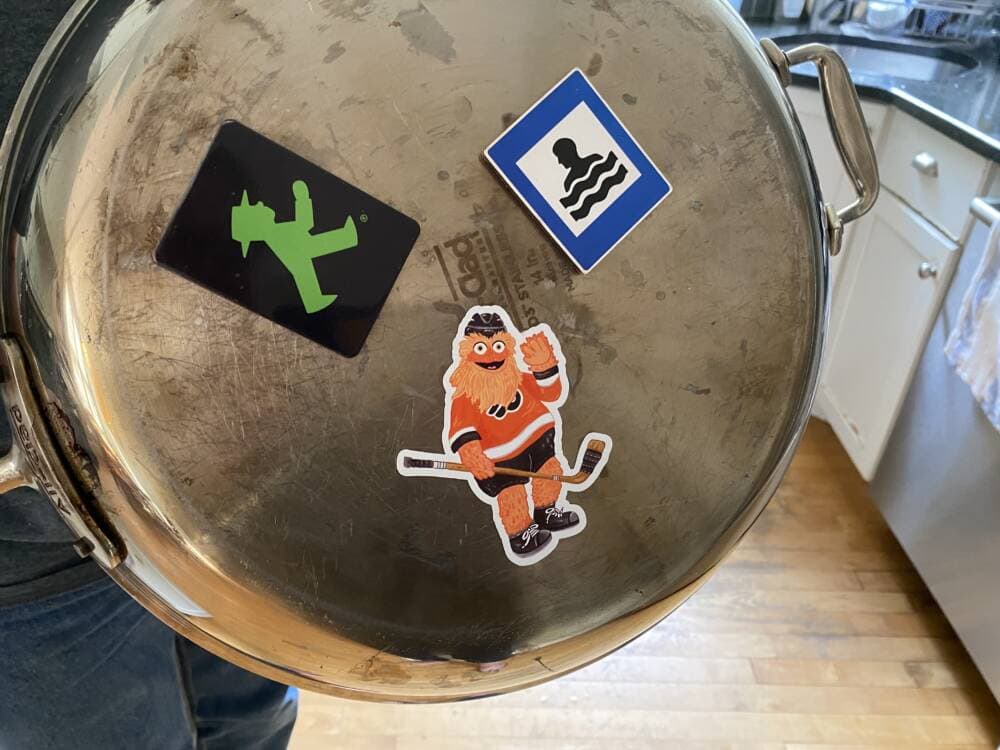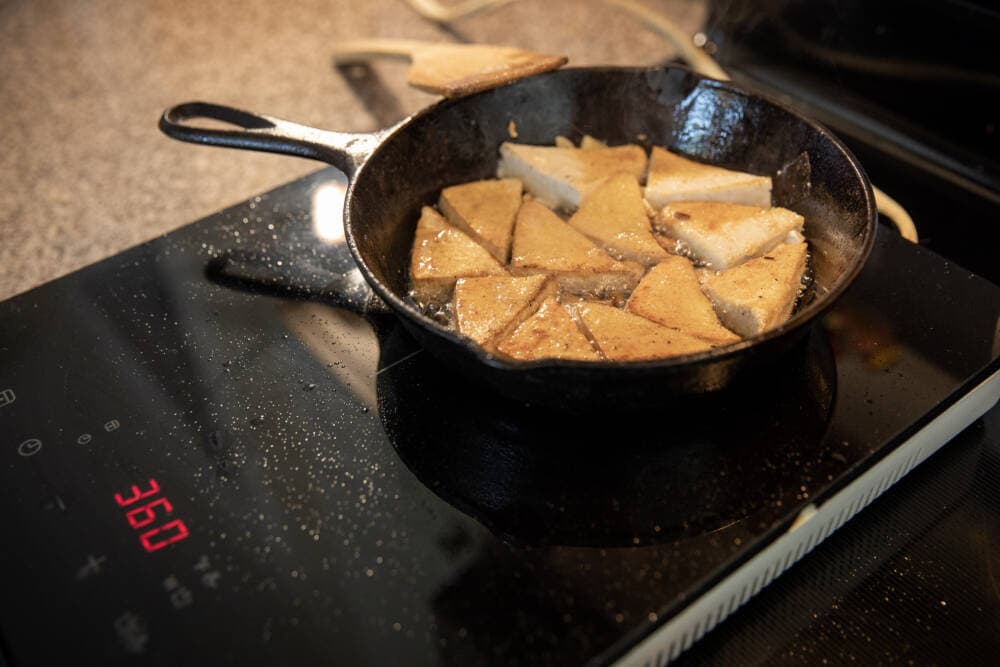Advertisement
Gas vs. electric stoves: Breaking down some burning health and environment questions

The gas vs. electric vs. induction stove debate has been simmering for years, but it exploded into a hot-button political issue in early 2023. That's when Bloomberg reported the feds might ban gas stoves. Spicy Twitter takes followed.
Here, for example, was how Texas Rep. Ronny Jackson reacted:
The excitement died down quickly. However, public health and environmental advocates are still calling for new regulations to mitigate the impacts gas stoves may have on our bodies and planet, and the Consumer Product Safety Commission is looking into possible safety issues.
So, what's all the fuss about? Here are answers to some burning questions.
Who's cooking with gas in America?
More than a third (38%) of cookstoves in America burn gas, according to the U.S. Energy Information Administration. The state with the highest percentage of gas-cookers is California (70%) and the lowest is Maine (7%). In Massachusetts, about 44% of people use a gas stove.
Fun fact: “Now you’re cooking with gas!” is an ad slogan invented by the gas industry in the 1930s.
I love my gas stove, but I’ve heard that cooking with gas is bad for my health. Is it really that bad?
I love my gas stove, too. But, yeah, there’s a lot of nasty stuff in natural gas. A 2022 study found 21 hazardous air pollutants in unburned natural gas sampled from homes across Greater Boston. The same study found benzene, a carcinogen, leaking from 95% of gas stoves sampled.
Research has shown gas stoves can leak pollutants even when they’re off.
A 2022 study found that people of color, lower-income households and people with limited English skills across Massachusetts are more exposed to gas leaks than the general population. Those same communities also wait longer to get leaks fixed.
And when you burn gas, it emits other pollutants like carbon monoxide and nitrogen dioxide, which can trigger asthma attacks and exacerbate other respiratory problems. A 2017 study from the Massachusetts Department of Public Health found gas stove use was the top trigger for pediatric asthma in the state; the American Public Health Association calls gas cooking stoves "a public health concern.”
I have a vent over my stove. Will that improve air quality?
If you vent cooking fumes you’ll improve indoor air quality, but only if you’re venting them outside. This is required in new or remodeled homes in most states, including Massachusetts, but old apartments and houses may have recirculating vents.
It can be hard to tell where your fan is venting, especially if the ductwork is hidden. Here’s a trick: try turning on the fan and holding a sheet of paper up to it — if the suction makes the paper stick to the vent, it’s probably venting outside; if any part of the vent blows the paper off, it’s probably recirculating.
“If your fan just recirculates, it's probably more prudent to open a window and run a fan that sucks the air out,” said Dr. Brita Lundberg, chair of the board at Greater Boston Physicians for Social Responsibility.
What are the climate concerns with gas stoves?
Cooking doesn’t use a lot of energy in the U.S.; in most houses, kitchen appliances make up only a small percentage of the home's overall carbon footprint.
But gas infrastructure leaks a lot of methane, a potent greenhouse gas. One study found that the climate impact of methane leaking from gas stoves in U.S. homes is comparable to the emissions of a half-million cars.

And getting rid of gas stoves is a necessary step toward moving our homes away from fossil fuels entirely, said Nathan Phillips, a Boston University ecologist and environmental activist. His obsession with the environmental and safety impacts of gas leaks turned him into a proponent of electric cooking.
“If there can be a transition from gas cooking to electricity, then that opens the gateway for severing the gas line altogether into that house,” he said.
Concerns about the environmental impacts of gas stovetops extend to gas ovens, too. If you switch both to electric, you can cap your gas line and minimize leaks.
(This explainer focuses on stovetops, instead of ovens, because that's where people notice the biggest difference in cooking.)
My electricity comes from burning fossil fuels. So, why would cooking with an electric stove be any better for the planet?
A team at Grist crunched the numbers and found that, on average, an electric induction stove and a gas stove in America currently produce about the same amount of carbon dioxide, but that’s because about 20% of electricity in the U.S. comes from burning coal.
In New England, there’s a good chance that the electricity in your home comes from burning natural gas — still a fossil fuel but better than coal, emissions-wise. So, that gives electric a little leg up around here. And as we generate more electricity from renewable sources like wind and solar, the grid — and therefore, electric stoves — will get even greener. President Biden has set a goal of 100% clean electricity nationally by 2035.
But if you’re looking for one big-ticket item to lower your carbon footprint right now, the Grist analysis says an electric car or heat pump will give you more bang for your buck than an induction stove.
How does an induction stove work? And how is it different from a traditional electric stove?
Both run off electricity. In old-school electric stoves, electricity flows through a metal coil and heats up. You’ve seen that glowing red coil, right? Hot! Don’t touch.
A traditional electric stovetop is a crude cooking device. It’s hard to control the heat, and old-style burners often slope to one side, leading to uneven cooking.
"I'm not a fan of the old-school electric stoves. They are a bit of a nuisance,” said local celebrity chef and “Chopped” grand champion Saba Wahid Duffy. She added they’re tough to clean; if you spill something onto the surface it will just “burn and stick.”
An induction stove acts sorta like a big magnet. The stovetop has copper coils, and when electricity flows through the coils they create — or induce (aha!)— a magnetic field. If you put a pot made from “ferromagnetic” material, like cast iron, onto an induction stove, the magnetic field interacts with the pot and heats it up.
Induction stovetops use energy more efficiently than gas or electric because the energy is so focused; it’s only heating up the pot and not the air around it. About 85% of the energy consumed by induction stovetops heats your food. For electric stoves, it’s about 75-80%, and for gas stoves, it’s a measly 32%.
NOVA has a nice explainer if you want a deeper dive into the science.
How many people in the U.S. own an induction stove?
Roughly a third (31%) of Americans have never heard of an induction stove, according to a 2022 Consumer Reports survey, and only 3% have one. However, nearly 70% of those surveyed said they might or would consider induction for their next stovetop.
The North American market for induction stoves is expected to grow about 8% each year. Globally, the market was worth $21 billion in 2020, and is expected to reach $36 billion by 2028, with the biggest gains in Asia.
If I get an induction stove, do I have to get new pots and pans?
Maybe. Only cookware made from ferromagnetic material like cast iron can be used on an induction stove. So, no aluminum, ceramic or glass cookware.
Pro-tip: if a magnet sticks to the pan, it’s induction friendly. Also, if the pan is warped, it won’t heat evenly on an induction stovetop.

Can I use an induction stove if I have a pacemaker?
Short answer: Probably yes, depending on the pacemaker. Talk to your doctor first.
Long answer: Machines that generate strong magnetic fields can indeed interfere with pacemakers (and other implanted devices) so it makes sense that induction stoves could be a concern.
The latest peer-reviewed research on this topic is a 2006 study, which says induction stoves “could conceivably” interfere with certain less-common pacemakers if a person stands really close to the stovetop while cooking, and if the pot is not centered on the burner.
That's a lot of “ifs” from a pretty old study.
Cardiologist Mark Estes, former director of the Cardiac Arrhythmia Center at Tufts Medical Center, offers some context:
He said the 2006 study looked at a “worst-case scenario” involving a less-common type of pacemaker with a large antenna, which is more likely to sense magnetic fields in the environment. Most pacemaker antennas are smaller and shielded from magnetic noise.
Either way, if a pacemaker encounters a small magnetic field (like an induction stove) for a short time, Estes said it’ll keep functioning as usual. Nothing will happen to the pacemaker or the patient.
"They would probably not even know that the pacemaker had seen that magnetic field,” he said. Pacemaker patients “can safely use an induction stove if they keep the pacemaker approximately two feet from the stovetop … recognizing that's a very, very, very conservative number.”
If you have a pacemaker and are considering an induction stovetop, Estes recommended:
- Checking with your doctor.
- Reviewing or asking about the specific brand/model of your pacemaker.
- Checking the specific brand/model of your stove.
Estes said folks with pacemakers should be more concerned about objects like magnetic mattresses and ab stimulators. If you’d like to go down a magnetic field rabbit hole, check out the American Heart Association’s website on things that might interfere with pacemakers.
I like cooking with gas because the flame is super adjustable and responsive. How does induction compare to that?
Once you get the hang of it, induction is more responsive than gas. Blasphemy, I know. But don’t trust me; trust chef Wahid Duffy.
“The induction responds immediately, so you can go from a high boil to a low simmer in a matter of seconds,” she said. “So, it's way more responsive and reactive to the heat controls.”
She said the cast iron grates on gas stoves absorb and retain a lot of heat. “So even if you go from a high boil to a low simmer, you're not getting an immediate reaction with the pan because the pan is still sitting on cast iron grates.”
One caveat: gas stoves are a better kitchen “workhorse” for people who like to use multiple burners, Wahid Duffy added. “If you have three or four or five pans going on induction, you might overload the system.”

I’ve heard induction burners boil water faster than gas burners. Is that true?
True! The folks at America’s Test Kitchen boiled two quarts of water on a gas stove and an induction stovetop. The gas stove boiled the water in 12 minutes; the induction stove took only seven. Here’s a video if you like watching water boil. (Plus, there's lots of other useful induction info in the video, too.)
However … an induction hot plate pulls less power from the wall than a full-on stove, so you lose some of that oomph. I tried the water boiling test at home with an induction plate I borrowed from my local library. The plate on “max” and a gas burner on full blast boiled a liter of water in about the same time.
Are induction stoves more expensive than other stoves?
Yes, but it depends on what you’re buying. Induction stoves start at around $1,000, while the cheapest gas stoves cost about $400, but there’s a wide range of ranges!
Here’s what was listed on the GE website in May 2023, for example:
- Gas ranges ran from $600-$3,300 (43 choices!)
- Standard electric stovetops were $600-$3,400 (54 choices!!)
- Induction ran from $2,700-$3,800 (only two choices! Womp, womp.)
There are also federal incentives to help people switch to electric stovetops. According to Rewiring America, low- to moderate income homeowners could receive:
- Up to $4,000 in savings for a new electrical panel.
- Up to $2,500 in savings for electrical rewiring.
- Up to $840 in savings to purchase electric cooking tech, like an induction cooktop.
In Massachusetts, the energy efficiency program MassSave offers a rebate of up to $500 for swapping a gas or propane stove for induction. Just be sure to contact MassSave before you make the swap.
You can also buy an induction hot plate for $50-$100. And then you can have an extra burner for vegan chili at your next game-watch party!
